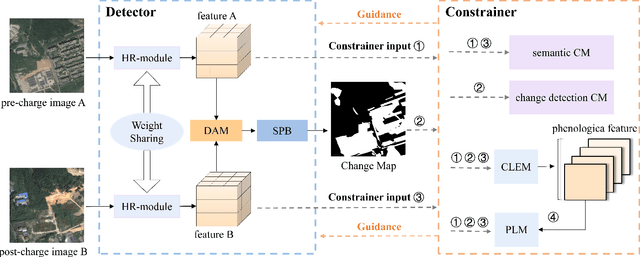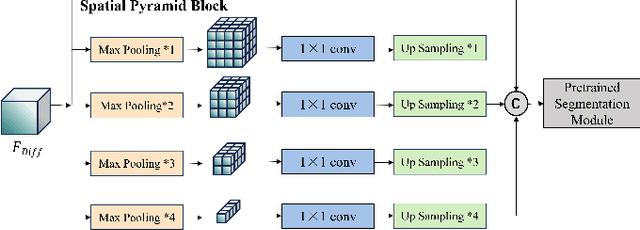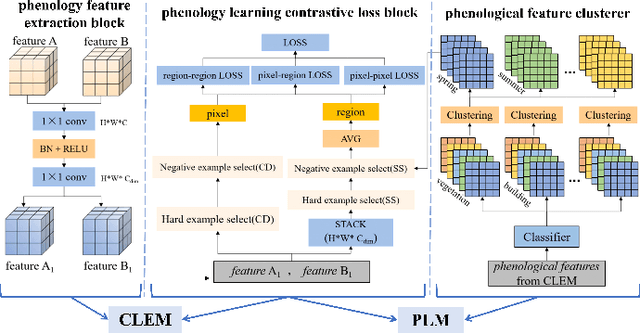Integrated Dynamic Phenological Feature for Remote Sensing Image Land Cover Change Detection
Paper and Code
Aug 08, 2024



Remote sensing image change detection (CD) is essential for analyzing land surface changes over time, with a significant challenge being the differentiation of actual changes from complex scenes while filtering out pseudo-changes. A primary contributor to this challenge is the intra-class dynamic changes due to phenological characteristics in natural areas. To overcome this, we introduce the InPhea model, which integrates phenological features into a remote sensing image CD framework. The model features a detector with a differential attention module for improved feature representation of change information, coupled with high-resolution feature extraction and spatial pyramid blocks to enhance performance. Additionally, a constrainer with four constraint modules and a multi-stage contrastive learning approach is employed to aid in the model's understanding of phenological characteristics. Experiments on the HRSCD, SECD, and PSCD-Wuhan datasets reveal that InPhea outperforms other models, confirming its effectiveness in addressing phenological pseudo-changes and its overall model superiority.
 Add to Chrome
Add to Chrome Add to Firefox
Add to Firefox Add to Edge
Add to Edge